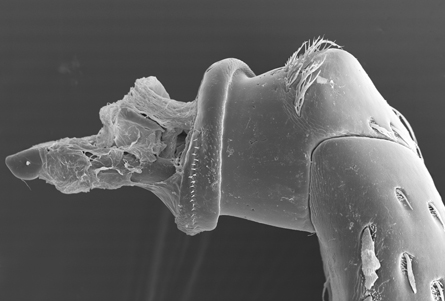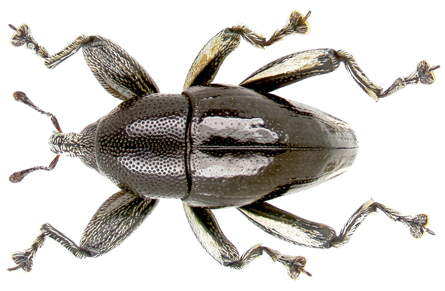Back when hardware meant bony plates and flesh-rending teeth, a living version of the humble screw evolved naturally in, of all places, the leg joints of weevils.


The legs of at least 15 kinds of weevils have tapering, threaded, somewhat pointed ends where their legs meet their bodies. As the leg shifts position, the threaded tip tightens or loosens along a ridge on the inside of a rounded hollow structure, researchers in Germany report in the July 1 Science. “This is the first description of a true screw and nut in an organism,” says coauthor Alexander Riedel of the State Museum of Natural History in Karlsruhe, Germany.
The weevil joint “is remarkable from a mechanical and anatomical standpoint,” says Roy Ritzmann, who studies insect locomotion at Case Western Reserve University in Cleveland. “It does confirm my notion that just about anything that is possible, insects will have evolved.”
Biologists had considered the leg joints of beetles, including weevils, as hinges, says Riedel. But he and his colleagues were marveling at several hundred newly described species of the weevil genus Trigonopterus from New Guinea, looking for specialized anatomical tricks that might have fostered such a successful burst of diversity.
“Weevils can bring their legs into a weird position under their bodies,” he says, tightening themselves up during a crisis like compact little seeds.
That kind of a move takes fancy leg joints. So Riedel and colleagues turned to synchrotron X-rays, which reveal tiny structures that might otherwise be hard to find.
Using the X-ray data to make 3-D models of the joints, the researchers found in the tiny Papuan weevil T. oblongus a ridge that spirals like a screw thread a full 360 degrees around the tip and then about a seventh of a turn more. The legs don’t ever spin all the way around in nature though, or the muscles would rip off.
Because a variety of other weevils examined turned out to have similar joints, Riedel suspects that this screw joint is a basic, ancient trait. “At the time of the dinosaurs, beetles were already walking around with a threaded screw and nut,” he says.
Such joints might allow more range of motion than a simple hinge — a benefit for the plant-clinging life of the weevil, Riedel speculates.
But that’s not necessarily the primary reason that evolution favored the weevil’s screwy anatomy. “Insects have considerable flexibility in their legs using conventional joints,” Ritzmann says. “It will be interesting to see behavioral studies to look into how the joint is utilized by these beetles.”






